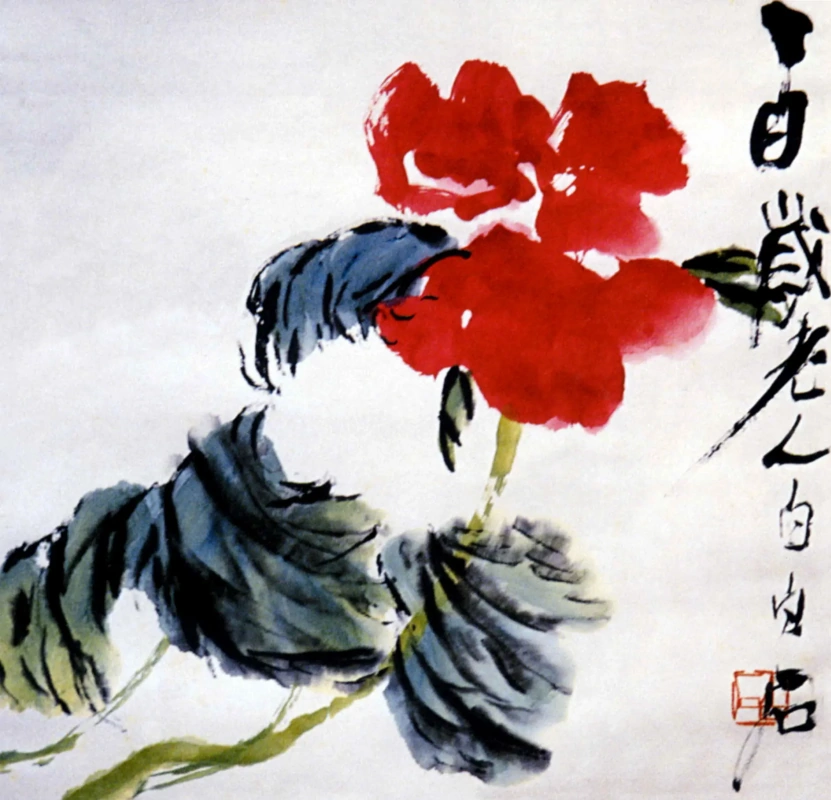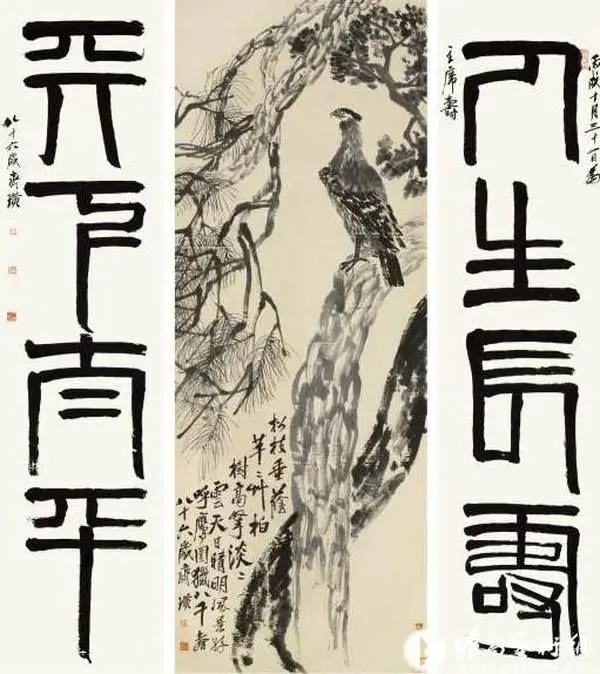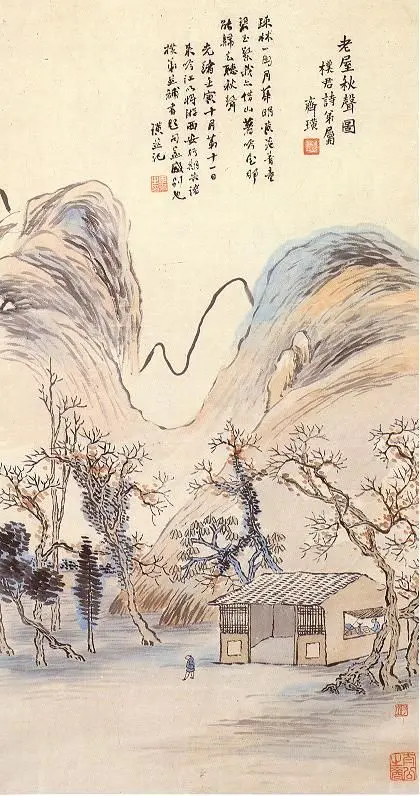С первой частью о счастливых художниках все было просто — и счастье очевидное, и ценности непреложные. Очень просто быть признанным, когда ты придворный художник-дипломат, совсем несложно красавчику-итальянцу среди многочисленных натурщиц встретить любовь всей своей жизни, сравнительно легко вырастить умных и талантливых детей, когда в твоем доме постоянно бывают друзья — один другого гениальнее. В XX веке гораздо легче стало получить десяток миллионов за картину еще при жизни, чем оставаться счастливым в своей стране или в большой семье. Две мировые войны, политические страсти, разрывающие планету на куски, сексуальная революция, поп-культура, Пепси-кола и Микки Маус, в конце концов.

Вместо парадных автопортретов художника биографы и арт-критики получили сотни фотографий: вот он с женой и детьми, вот — с друзьями и за работой, курит. Вместо классических жизнеописаний, вычищенных от случайностей и слухов, художники XX века обзавелись сотнями скандальных газетных статей и десятками многостраничных воспоминаний современников. Но даже в этом беспощадном столетии лимита настоящего счастья хватило тем, кто в списке претендентов обычно плетется в хвосте — сложным, тонким, мятежным, мудрым гениям.

Марк Шагал, 1965.
Марк Шагал
Марк Шагал прожил 97 лет в Витебске, Санкт-Петербурге, Москве, Париже, Берлине, Нью-Йорке. Он как будто родился специально для счастья. Начал учиться живописи в 19 лет в частной школе в Витебске, а в 23 уезжает с личной стипендией в Париж. Первые же выставки, персональные и совместные, проходят для него просто и успешно. В 30 лет он уже художник с мировым именем — и с этим считается даже новая советская власть, случайно заполучившая Шагала в руководители Свободной академии и уполномоченные по делам искусства в Витебске. Если бы не Первая мировая война, вряд ли бы он расстался так надолго с Парижем.Даже если бы история случайно не сохранила свидетельств о личной жизни Шагала, только его полотен хватило бы для мистического предположения: этот художник не просто был счастлив и влюблен, в маленьком Витебске он встретил свою судьбу, которая 35 лет дарила ему возможность парить над миром. Больше двух тысяч работ Шагала — это свидетельство любви к его неземной, чудесной, прекрасной Белле, жене, музе и сокровищу.
День рождения
1915, 80.8×100.3 см
Белла была рядом, когда Шагала ссылают из Москвы преподавать рисование в колонии для беспризорных, когда он нищим эмигрантом уезжает в Берлин и безуспешно ищет брошенные в Европе полотна. Она будет рядом, когда у художника появятся настоящая известность и первые большие деньги, они вместе путешествуют и вместе встречают тот день, когда картины Шагала объявят «дегенеративными». И позже она будет рядом, когда оставаться в Европе евреям станет крайне опасно и Шагал уедет в Америку. Когда ее не станет, Марк Шагал выбросит кисти и на год прекратит писать, но, конечно, оживет и продолжит летать в мечтах и опять писать Беллу, по памяти.
Белла не увидит, как 77-летний Шагал по просьбе президента Франции поднимется на леса, чтобы расписать плафон парижской Гранд Опера, а еще через два года — создаст панно для Метрополитен Опера в Нью-Йорке. И позже, когда в Лувре пройдет выставка Марка Шагала и он получит орден Почетного легиона. Рядом с ним, веселым и неспособным к одиночеству, будет вторая жена Вава и пожизненный ангел-хранитель, уже совсем взрослая дочь Ида.
Белла не увидит, как 77-летний Шагал по просьбе президента Франции поднимется на леса, чтобы расписать плафон парижской Гранд Опера, а еще через два года — создаст панно для Метрополитен Опера в Нью-Йорке. И позже, когда в Лувре пройдет выставка Марка Шагала и он получит орден Почетного легиона. Рядом с ним, веселым и неспособным к одиночеству, будет вторая жена Вава и пожизненный ангел-хранитель, уже совсем взрослая дочь Ида.

Альфонс Муха, 1898.
Альфонс Муха
Альфонс Муха обладал завидным запасом удачливости, которого хватило художнику на все 79 лет жизни. Он встречал правильных людей, получал судьбоносные заказы и стипендии, вовремя находил источники финансирования для воплощения самых невероятных замыслов и стал знаменитым после первого же серьезного заказа.Альфонс Муха. Портрет Марушки
Даже личная жизнь устроилась для Мухи как будто сама собой. Марушка была младше Альфонса на 22 года, но влюбилась первой, страстно и безоглядно, добилась встречи с художником, пришла в студию и осталась рядом до самой его смерти.
Ярослава и Иржи - дети художника
1919, 82.8×82.8 см
Точно так же за 10 лет до этого Сара Бернар сама разыскала художника, создавшего невероятно красивый и неожиданный плакат для ее спектакля «Жисмонда». Она очень хотела лично познакомиться с человеком, который превратил ее в богиню и заставил парижан охотиться по ночам за расклейщиками афиш. В ближайшие 6 лет Муха будет не только художником театра «Ренессанс», но и создателем костюмов, декораций и даже иногда помощником режиссера. К моменту встречи с Марушкой Альфонс — самый модный художник Парижа, в его студию стоит очередь из восторженных красавиц, желающих обзавестись портретом «в стиле Мухи».
Но страстно влюбленному, феерически знаменитому Альфонсу Мухе в личной формуле счастья все эти золотые годы не хватало одного слагаемого — родины. И тогда судьба в третий раз проявила себя гениальным математиком — и дорисовала недостающее слагаемое. В Америке на обычном светском приеме Муха встречает единомышленника и богача Чарльза Крейна, который вызывается оплатить огромный проект художника — цикл из 20 огромных полотен «Славянская эпопея». А значит, можно возвращаться домой, в Прагу.
Но страстно влюбленному, феерически знаменитому Альфонсу Мухе в личной формуле счастья все эти золотые годы не хватало одного слагаемого — родины. И тогда судьба в третий раз проявила себя гениальным математиком — и дорисовала недостающее слагаемое. В Америке на обычном светском приеме Муха встречает единомышленника и богача Чарльза Крейна, который вызывается оплатить огромный проект художника — цикл из 20 огромных полотен «Славянская эпопея». А значит, можно возвращаться домой, в Прагу.

Татьяна Яблонская, 1978.
Татьяна Яблонская
Сейчас к жизнеописаниям великих советских художников для постсоветского переформатирования принято добавлять: «…и при этом остался достойным человеком». Портретов Сталина на заказ не писал — в XXI век допускается. Татьяна Яблонская из таких, достойных и не писавших Сталина, но в XXI век она пришла самостоятельно. Художница родилась в 1917, еще при царе, а умерла в 2005 — в независимой Украине, ей специальный пропуск не нужен, она больше, чем Советский Союз.Юная Яблонская была самой знаменитой и многообещающей студенткой, ей устроили даже персональную выставку. В 27 лет она уже стала преподавателем Художественного института, а в 33 получила первую Сталинскую премию. Ее «Хлеб» и «Утро» знал каждый советский школьник. Но, постоянно выламываясь из обволакивающего мрамора признания, она отказывалась становиться памятником. Послевоенный монументальный восторг, колхозы-кормильцы, дети, смеющиеся в залитых солнцем парках, вдохновляли ее ровно столько, сколько потребовалось для возвращения к мирной жизни. А потом — на каждой новой выставке это была совершенно новая Яблонская: из путешествия по западной Украине привезла национальную декоративность, из Италии — потрясенное восхищение старыми мастерами.
Татьяна Яблонская была замужем дважды и прожила с каждым мужем ровно по 11 лет и стала мамой трех дочерей. Оля, Лена и Гаянэ — сначала любимые мамины модели, а потом и сами художницы. По семейной легенде, будущий муж Лены Яблонской влюбился сначала в ее изображение с картины «Утро». Еще мальчишкой он вырезал репродукцию и прикрепил к стене, а когда вырос, женился на девочке, делавшей зарядку в залитой утренним солнцем комнате.
Татьяна Яблонская, депутат Верховного совета, член самых разных художественных комиссий и государственный структур, всегда умудрялась оставаться удивительной женщиной, страстной и увлекающейся. Занималась йогой и каталась на лыжах, плавала и экспериментировала с голоданием, водила машину и моторную лодку, в школе рассказывала одноклассникам дочерей о своей поездке на Венецианскую биеннале, лечила детские простуды отварным картофелем и не ходила на родительские собрания, пекла пироги и отдыхала в Седневе под Черниговом.
Когда маленькая девочка Таня Яблонская смотрела на небо в ожидании падающей звезды, она каждый раз просила: «Хочу стать хорошим художником». Когда признанная художница Татьяна Яблонская, прикованная к инвалидному креслу в последние 6 лет жизни, научилась рисовать левой рукой, это было настоящее счастье.
Когда маленькая девочка Таня Яблонская смотрела на небо в ожидании падающей звезды, она каждый раз просила: «Хочу стать хорошим художником». Когда признанная художница Татьяна Яблонская, прикованная к инвалидному креслу в последние 6 лет жизни, научилась рисовать левой рукой, это было настоящее счастье.

Ци Байши
Ци Байши в 2010 году занял третье место среди самых продаваемых в мире художников после Пикассо и Уорхола. Но еще при жизни он стал легендой и был щедро одарен всеми возможными в Китае почестями и уважением. За год до смерти Ци Байши получил Международную премию мира, ему тогда было 92 года.Первая жена Ци Байши пришла в дом его родителей 12-летней девочкой и прожила с Ци 65 лет. Но потом рядом с ним, зрелым мастером и взрослым мужчиной появится другая женщина, выбранная и любимая. Они познакомятся в 1919 году, а поженятся только в 1940, когда умрет первая жена Байши. «Великий художник китайского народа» написал 12 пейзажей с изображением горы Хэншань и на вырученные от продажи деньги построил дом-студию. Однажды он пошел путешествовать по самым прекрасным провинциям и большим городам Китая, вернулся домой с 52 пейзажами и решил больше никогда не оставлять надолго своих детей и дом. Он был почетным профессором и председателем десятка академий, конгрессов и объединений художников Китая, был депутатом и другом Мао Цзедуна, им восхищались японцы и французы, он долгие годы преподавал и возглавлял художественную академию и сам всю жизнь учился у великих художников, с которыми его сводила жизнь. Но вряд ли он именно эти почести назвал бы своим настоящим счастьем.
Счастье — это растить 7 сыновей и 5 дочерей. Счастье — это до глубин постигать каждое ремесло и искусство, за которое берешься: резьбу по дереву и камню, каллиграфию, живопись и поэзию. Счастье — разводить птиц и креветок, выращивать цветы и деревья, чтобы рисовать их несколько десятков лет, и только к концу жизни начать понимать их внутреннюю сущность и характер.
Цветок
XIX век
Крайняя слева работа — «Орел на сосне» — в 2011 году была продана за 65 млн. долларов на аукционе в Пекине, что, вероятно, сделало счастливым ее обладателя.
Анна Сидельникова
Анна Сидельникова
Художники, яких згадують у статті


























